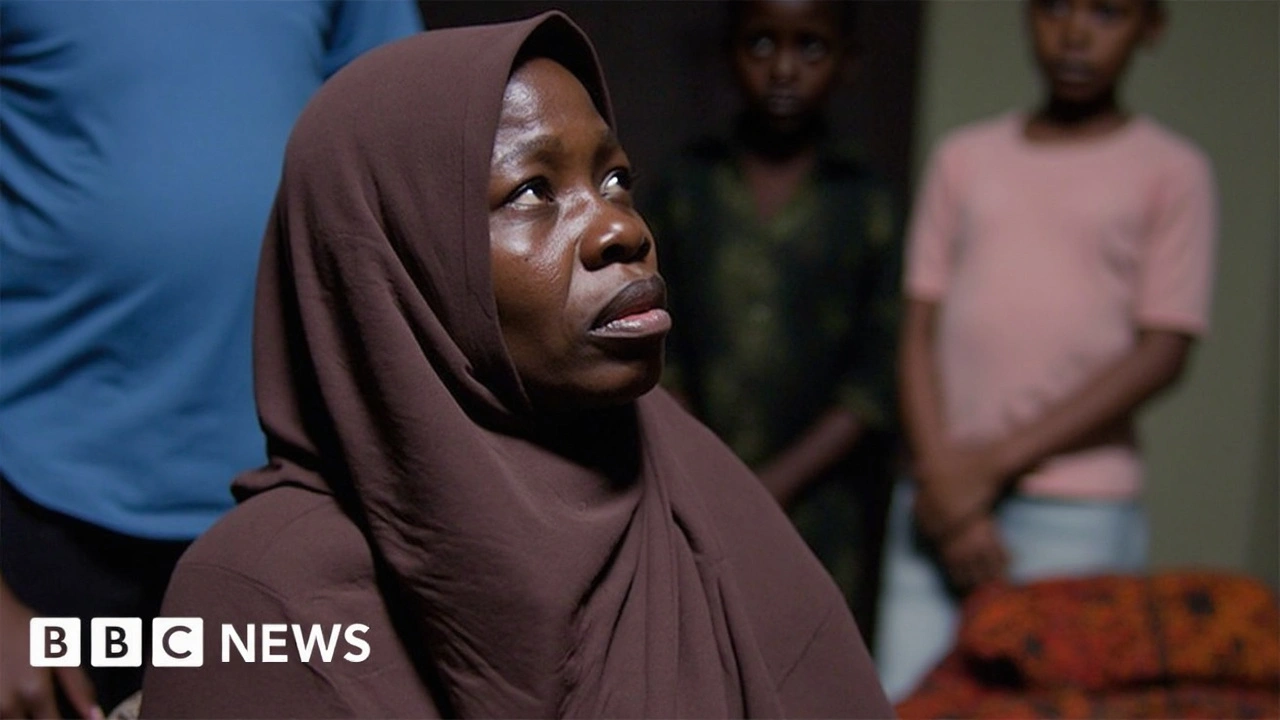A Perfect Storm: Collapsed Dam, Relentless Rain, and a City Underwater
The shock of the Alau Dam collapse in September 2024 still lingers across Maiduguri. Picture this: a city already bruised from years of violence and instability, suddenly drowning in a matter of hours. Seventy percent of Maiduguri lay underwater after days of pouring rain battered the dam until it finally cracked open. The flooding sent over 400,000 people searching for high ground, while more than a million felt the chaos in some way—losing homes, businesses, or loved ones. Official figures put the death toll at 150, though locals whisper of more uncounted victims washed away or swept under collapsed buildings.
People in Maiduguri know hardship. Boko Haram insurgency has haunted them for more than a decade, destroying villages and scattering families. So when the flood hit, many survivors already carried deep scars. Take Fatima Umar—a mother of three who uses a wheelchair. When the water surged into her home, she was entirely dependent on the kindness and strength of neighbors. Her story isn't unique. Thousands found themselves racing through sewage-tinged waves, climbing onto makeshift rafts or relying on neighbors just to escape being swept away.

Displacement, Hunger, and a Growing Sense of Abandonment
Most of Maiduguri’s central neighborhoods became lakes overnight: roads disappeared, schools and clinics were wrecked, and whole communities vanished beneath the murky current. Students’ exams ended abruptly. Shoppers deserted half-submerged markets. Government buildings stood silent, waterlogged and unusable. At Sanda Kyarimi Park Zoo, only a tiny fraction of the animals survived, with about 80% drowned or missing. And as the waters receded, the scale of the destruction became painfully clear—more than 1 million people suddenly faced homelessness, food shortages, and an unfamiliar cityscape torn to shreds.
For those pushed into relief camps like Teachers Village, conditions are beyond cramped. Outsiders often imagine tents packed together, but survivors describe scenes where dozens sleep in sweltering classrooms without running water or private bathrooms. Many lost what little food or valuables they owned. Aid hasn’t arrived fast enough. Humanitarian groups are already stretched thin between feeding displaced people here and tackling a wave of cholera and malnutrition sparked by the floods. Fatima and her children line up daily for small bowls of rice and lentils, with little clarity on when or if things will improve.
The disaster exposed serious cracks in Nigeria’s crisis response. Even after 30 years without floods this severe, Maiduguri is no stranger to seasonal rains. But the dam, designed decades ago to protect the city, had long needed major repairs. Yet, after the collapse, the federal government’s help moved at a crawl. Promises and press releases replaced real work. People in Maiduguri watched as officials sidelined the experienced local contractor, Mothercat Nigeria Limited. The new company tapped for repairs reportedly abandoned efforts after barely starting, leaving gaping holes and rusting equipment near Lagos Street Bridge as a reminder of how little progress had been made.
Now, anxiety looms over the 2025 rainy season—just a few months away. Residents warn that without fast and serious dam reconstruction and drainage upgrades, another disaster could wipe out whatever’s left of their city. Calls for help blare from radios, mosque loudspeakers, and social media, but impatience is growing on the ground. People here know that hunger, homelessness, and political finger-pointing won’t hold back the rain.

Alex Lee
May 1, 2025 AT 18:05This disaster is just another proof that the government can't handle basic infrastructure. Stop whining and fix the dam.
Vida Yamini
May 4, 2025 AT 01:38The flood in Maiduguri is a heartbreaking reminder of how fragile life can be when nature and neglect collide.
Your story about Fatima shows the incredible resilience that everyday people possess even when the world seems to turn against them.
Communities have rallied together, sharing food, water, and shelter with a generosity that deserves global applause.
It is vital that aid organizations coordinate closely with local leaders to ensure that supplies reach those who need them most.
Long‑term solutions must include rebuilding the dam with modern engineering standards to prevent a repeat of this tragedy.
Infrastructure projects should involve community input so that the designs respect the unique challenges of the region.
Training local technicians will create jobs and ensure that maintenance can be carried out promptly.
While the government’s response has been slow, pressure from civil society can accelerate meaningful action.
International partners can lend expertise and funding, but the driving force must come from Nigerians themselves.
Education about flood safety can empower families to protect themselves during future rains.
Schools should incorporate practical drills so that children know where to go when water rises.
Mental health support is also crucial; trauma from loss and displacement can linger for years.
Volunteers should be trained to provide counseling in culturally sensitive ways.
In the meantime, every donation, no matter how small, adds up and can make a difference for those living in cramped camps.
Keep the spirit of solidarity alive and let this tragedy be the catalyst for lasting change.
James Lawyer
May 6, 2025 AT 09:12The collapse of the Alau Dam underscores systemic deficiencies in risk assessment and maintenance protocols.
A comprehensive audit of all similar structures in the region would be prudent.
Additionally, integrating hydrological forecasting with real‑time monitoring could mitigate future incidents.
It is also worth examining the allocation of reconstruction funds to ensure transparency and efficacy.
Ultimately, a multidisciplinary approach involving engineers, policymakers, and local stakeholders is essential.
Abby Culbertson
May 8, 2025 AT 16:45i cant even think how hard it must be for them now
Awolumate Muhammed Abayomi
May 11, 2025 AT 00:18We need all hands on deck, peopel help each other, stat!
Josh Tate
May 13, 2025 AT 07:52My heart goes out to every family forced out of their homes.
The picture of Fatima and her kids waiting for a bowl of rice is something I can't forget.
It shows how vital swift humanitarian aid is, and why we must push for better disaster preparedness.
I hope the world hears their cries.
John Smith
May 15, 2025 AT 15:25Look, if they had done a simple inspection back in 2022 they'd have seen the cracks. Nobody wants to spend a few million on maintenance until it blows up.
Alex Soete
May 17, 2025 AT 22:58Hey everyone, let’s turn this tragedy into a movement!
Share verified info, donate to reputable NGOs, and keep the conversation alive.
Every retweet, every dollar counts toward rebuilding a safer Maiduguri.
Together we can pressure the authorities to act fast and keep future floods at bay!
Cara McKinzie
May 20, 2025 AT 06:32Honestly this is just another sad meme in the news feed, nothing changes.